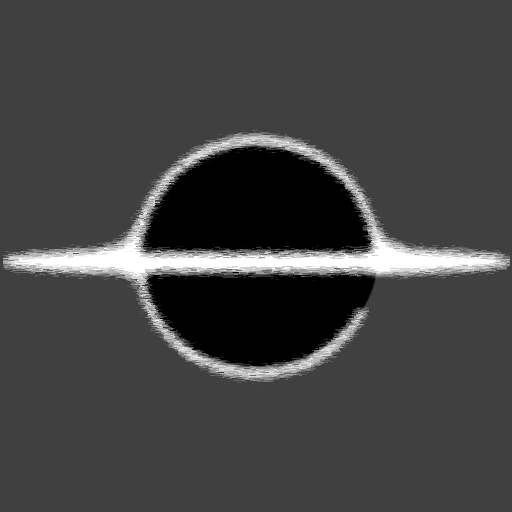Blazor - Page Animated Transitions
With this article I will go over how to use BlazorTransitionableRoute to create an animated transition between Blazor page transitions.
When playing around with my canhorn/EventHorizon.Blazor.UX project I wanted to add a bit of movement to every action the user does, and the most up front way to give this impression is during page navigation. I use the BlazorTransitionableRoute package with my Blazor application to help control the timing of page transitions, below I include a hight over view of the code I used, it's not a working example here, but you can checkout canhorn/EventHorizon.Blazor.UX for the source code, and the EventHorizon.Blazor.UX sample site for a live demo.
Example
Checkout this awesome Blazor package that I used to take care of the plumbing of hooking into the Route events: BlazorTransitionableRoute
To handle the heavy lifting of the transition animations this solution uses Animate.css.
Checkout a live Demo here EventHorizon.Blazor.UX.
You can also checkout the source of the whole site in the canhorn/EventHorizon.Blazor.UX Github repository.
App.razor
Here is the LayoutView, with two new routes. The routes are the current and next route.
<Router AppAssembly="@typeof(Program).Assembly">
<Found Context="routeData">
<LayoutView Layout="@typeof(MainLayout)">
<TransitionableRoutePrimary RouteData="@routeData">
<TransitionableRouteView DefaultLayout="@typeof(MyViewLayout)" />
</TransitionableRoutePrimary>
<TransitionableRouteSecondary RouteData="@routeData">
<TransitionableRouteView DefaultLayout="@typeof(MyViewLayout)" />
</TransitionableRouteSecondary>
</LayoutView>
</Found>
<NotFound>
<LayoutView Layout="@typeof(MainLayout)">
<p>Sorry, there's nothing at this address.</p>
</LayoutView>
</NotFound>
</Router>
MyViewLayout.razor
This custom View Layout, when used with the App.razor above, helps with transition and timing of all the pages content.
@inherits TransitionableLayoutComponent
<div class="view-content transition @transitioningClass">
@Body
</div>
@code {
// Triggers the transition in/out of this view
private string transitioningClass => TransitioningIn ? "transition-in transitioning" : "transition-out transitioning";
}
MyViewLayout.razor.css
Helps to style the page content for a smoother transition.
.view-content {
padding-left: 2rem !important;
padding-right: 1.5rem !important;
}
.transition-in {
opacity: 0;
}
.transitioning {
position: absolute;
left: 0;
right: 0;
}
.transition-display-none {
display: none;
}
JavaScript
Slightly complicated but handles the in/out animation of the transition marked elements on the page and other edge cases.
window.ehzBlazorUx = {
transitionFunction: function (back) {
let transitionIn = document.getElementsByClassName('transition-in')[0];
let transitionOut = document.getElementsByClassName('transition-out')[0];
if (transitionIn && transitionOut) {
const handle_transitionOut_onanimationend = () => {
console.log('Transition ended');
transitionOut.removeEventListener("animationend", handle_transitionOut_onanimationend);
transitionOut.classList.remove("transitioning");
if (transitionOut.classList.contains(
"transition__out"
)) {
transitionOut.classList.add('transition-display-none');
}
if (transitionOut.classList.contains(
"transition__in"
)) {
transitionOut.classList.remove('transition-display-none');
}
};
const handle_transitionOut_onanimationcancel = () => {
console.log('Animation Cancel');
transitionOut.removeEventListener("animationend", handle_transitionOut_onanimationend);
transitionOut.removeEventListener("animationcancel", handle_transitionOut_onanimationcancel);
};
transitionOut.addEventListener('animationend', handle_transitionOut_onanimationend);
transitionOut.addEventListener('animationcancel', handle_transitionOut_onanimationcancel);
transitionOut.classList.remove('transition-out');
transitionOut.classList.remove('transition-display-none');
transitionOut.classList.add(
"transition__out",
// These are Animate.css provided css
"animate__zoomOut",
"animate__slow",
"animate__animated"
);
const handle_transitionIn_onanimationend = () => {
console.log('Animation ended');
transitionIn.removeEventListener("animationend", handle_transitionIn_onanimationend);
if (transitionIn.classList.contains(
"transition__in"
)) {
transitionIn.classList.remove('transition-display-none');
}
if (transitionIn.classList.contains(
"transition__out"
)) {
transitionIn.classList.add('transition-display-none');
}
};
const handle_transitionIn_onanimationcancel = () => {
console.log('Animation Cancel');
transitionIn.removeEventListener("animationend", handle_transitionIn_onanimationend);
transitionIn.removeEventListener("animationcancel", handle_transitionIn_onanimationcancel);
};
transitionIn.addEventListener('animationend', handle_transitionIn_onanimationend);
transitionIn.addEventListener('animationcancel', handle_transitionIn_onanimationcancel);
transitionIn.classList.remove('transition-in');
transitionIn.classList.add(
"transition__in",
// These are Animate.css provided css
"animate__zoomIn",
"animate__animated"
);
}
}
}

